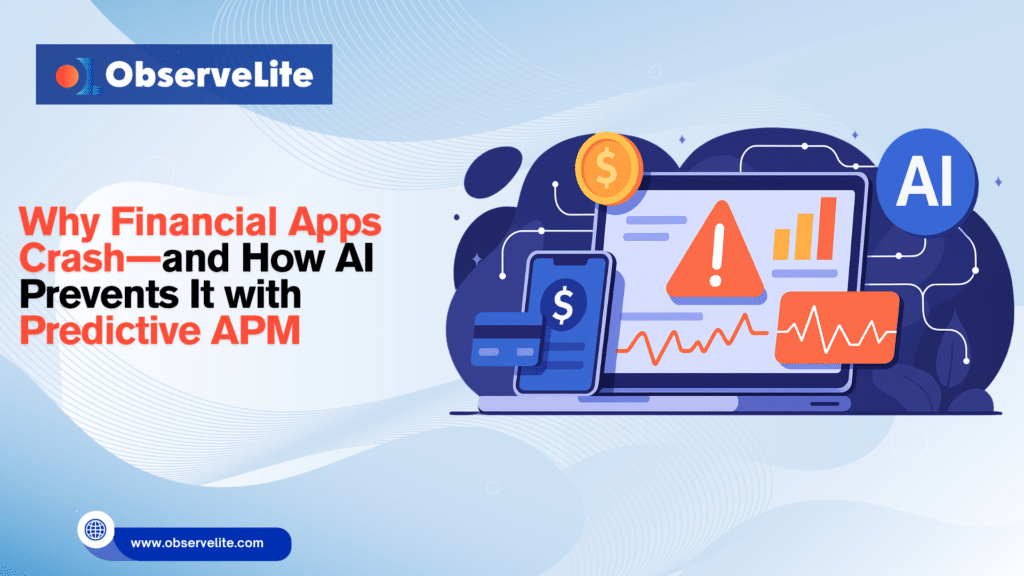One failed payment. One app froze. One slow trade execution.
That’s all it takes to erode user trust in fintech. Behind every failed tap or laggy transaction is a performance issue that was either ignored or caught too late. With users expecting real-time responsiveness and regulators demanding uptime guarantees, traditional monitoring just doesn’t cut it.
That’s why fintech leaders are moving beyond dashboards—toward AI-powered APM in fintech that anticipates problems, isolates root causes, and even fixes them before users feel the impact. In this blog, we break down how predictive APM helps you stop crashes before they start—and why your next performance edge won’t come from more alerts, but smarter ones.
Why Do Financial Apps Crash? The Tech Behind the Trouble
Fintech systems operate under intense performance requirements and regulatory scrutiny. They often crash due to
- Third-party dependency issues (e.g., failed KYC or payment gateway integration)
- High-frequency traffic surges during market hours
- Resource misallocation, such as memory saturation or CPU throttling
- Application logic errors after frequent CI/CD deployments
- Poorly handled edge cases under scale (e.g., rate-limiting spikes)
Traditional monitoring flags errors only after symptoms appear. But in finance, latency isn’t just inconvenient—it’s a liability.
What is Predictive APM—and Why Fintech Needs It Now
Predictive APM (Application Performance Monitoring) powered by AI doesn’t just report metrics. It continuously learns app behavior, builds baseline expectations, and automatically detects early deviations—before a crash happens.
ObserveLite’s OL-APE is built to do exactly that. It’s not a reactive tool. It’s a proactive AI-Powered APE engine built to understand fintech stack intricacies and automate performance decisions in real time.
Inside OL-APE: How Predictive APM Works
ObserveLite’s AI engine, OLGPT, powers OL-APE with three critical capabilities:
1. Behavioral Baselines & Anomaly Detection
AI observes telemetry like memory usage, API latency, and throughput—learning what “normal” looks like at every layer. When usage patterns drift (say, a 20% rise in DB response time post-deploy), it flags the anomaly before it escalates.
2. Root Cause Analysis (RCA) in Context
Instead of bombarding your DevOps with alert noise, OL-APE correlates metrics across infra, app, and network layers to pinpoint the root cause. It answers not just “what went wrong,” but “why” and “where.”
Example: Checkout flow slowing due to downstream microservice memory leak. OL-APE detects this and suggests restarting the pod before the issue hits users.
3. Automated Remediation & Smart Suggestions
When automation is enabled, OL-APE can initiate auto-healing workflows via Kubernetes or Terraform—scaling resources, restarting processes, or triggering rollbacks based on learned behavior.
The Business Impact of AI-Powered APM in Fintech
| Benefit | Outcome |
| Early anomaly detection | Prevents crashes before they begin |
| Faster RCA | Reduces MTTR (mean time to resolution) |
| Self-healing automation | Minimizes manual interventions |
| Fewer false positives | Reduces alert fatigue for DevOps |
| Higher app uptime | Improves customer trust & retention |
Real-World Use Cases
1. Digital Wallets Under Load
During salary credit hours or cashback campaigns, usage spikes 5x. OL-APE preemptively scales microservices and reroutes traffic to ensure no transaction fails.
2. Credit Line Platforms
AI detects when API calls to external credit scoring services are timing out. OL-APE automatically retries or delays workflows with fallback logic, preserving user flow.
3. Trading Apps During Market Volatility
High-frequency orders strain infrastructure. OL-APE auto-detects growing latency in trade execution and prioritizes queue threads based on transaction value.
Why This Matters to CIOs and CTOs
For product heads and tech leaders in fintech, reliability is reputation. Every crash affects
- User trust
- Regulatory risk
- Brand image
- Revenue performance
AI-powered APM in fintech is no longer optional. It is essential infrastructure that helps your teams observe, understand, and act faster.
AI-Powered APM in Fintech: The Competitive Edge
ObserveLite’s OL-APE doesn’t just collect logs or run static rules. It learns, adapts, and acts in real time. It transforms fintech apps from monitored to self-defending systems—with explainable AI that supports decisions across teams.
That’s not just observability. That’s autonomous resilience for financial software.
Key Takeaways
- Why apps crash: Fintech systems face complex pressures from dependencies, usage spikes, and infrastructure bottlenecks.
- Why AI helps: Predictive anomaly detection and automated resolution reduce crashes and boost performance.
- Why ObserveLite OL-APE: Domain-specific AI trained on real workloads for actionable insights and reliability at scale.
Ready to Prevent the Next Crash?
Whether you are building a neobank, payment app, or embedded finance solution—OL-APE can give you the performance edge your competitors don’t have yet.
Request a personalized demo


